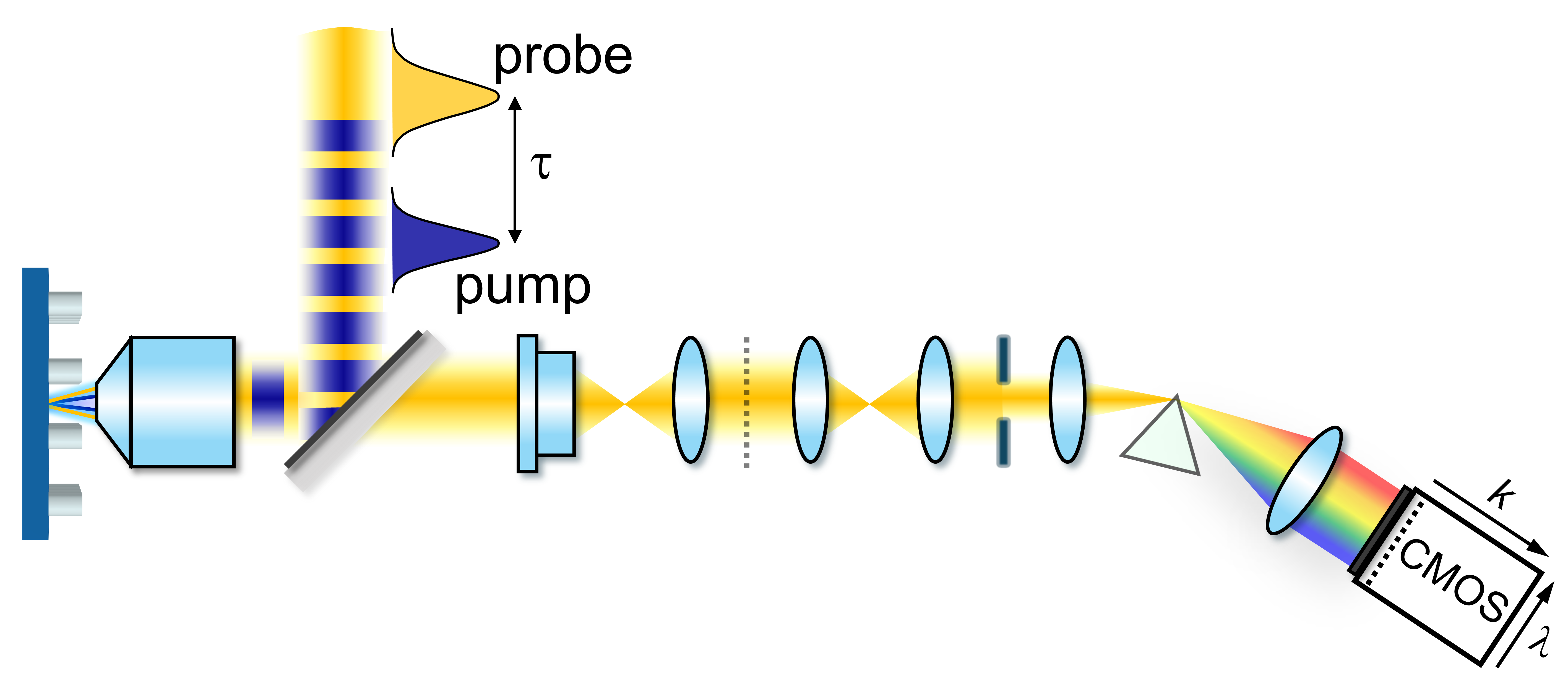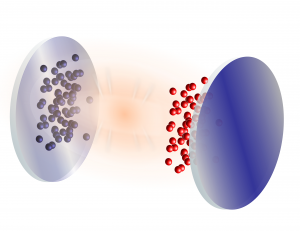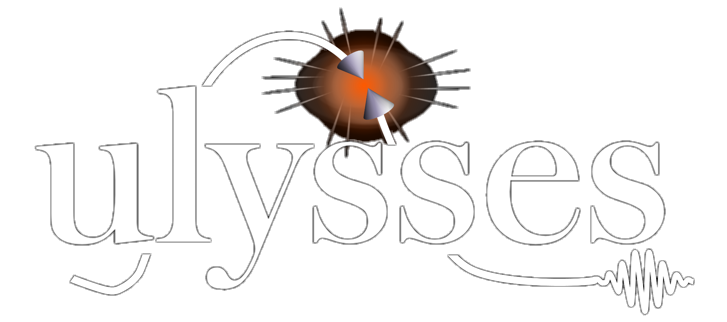Ultrafast spectroscopy in k-space
Photoinduced processes are typically studied with transient absorption (TA) spectroscopy, which allows to unveil molecular mechanisms occurring on the femtosecond timescale (1 fs = 10 -15 s). Ultrafast TA spectroscopy has also been employed to follow the dynamics of molecular polaritons. This approach measures simultaneously the frequency spectrum and the temporal evolution of the interaction, allowing to observe directly the coherent light-matter hybridization (Rabi oscillations).
In parallel, the most conventional method for probing the strong coupling of excitonic materials to cavities in static conditions is Fourier imaging, which measures simultaneously the frequency spectrum and angular distribution of light. In this way, one can directly observe the polariton dispersion and extract the energy of their coupling strength (Rabi splitting).

In order to control ultrafast photoinduced processes by modulating strong light-matter interaction, ULYSSES will develop a new multidimensional ultrafast spectroscopic platform for the simultaneous measurement of frequency, time and momentum dimensions on the femtosecond timescale, suitable for characterizing fundamental mechanisms in transient strong coupling.
Ultrafast nanophotonics: all-optical metasurfaces
Dynamic metasurfaces have emerged as a disruptive change in the way optical systems can be tailored, combining the flexibility of flat optics in spatially engineering materials with the opportunity to modify the metasurfaces’ properties upon external stimuli over time. The photoinduced optical nonlinearities mediated by ‘hot’ electron-hole pairs represent the elective mechanism to maximize the reconfigurability speed and reach tuning rates up to tens of GHz, beyond any other approach.
In the context of manipulation of light-matter interactions, optical metasurfaces are used in a cavity-like architectures with emitters or molecules, acting as open metacavities and enabling to enhance the interactions with matter.

ULYSSES will employ reconfigurable metacavities for ultrafast all-optical tuning of resonances. Ultrashort pulses will be exploited to modify the optical properties of designer meta-atoms at the deep sub-wavelength spatial scale, and the femtosecond light-driven effects will enable to transiently access the strong coupling regime.
Polariton chemistry in real time
Hybrid polariton states are bosonic quasi-particles generated by the strong coupling between a confined electromagnetic field and matter excitonic states. Such exceptional hybridization condition between optical modes and molecular transitions can be achieved either in the vibrational or the electronic regime. Changes in chemical reactivity have been demonstrated, opening the fast-growing field of polariton chemistry.
In order to fully control a photoinduced chemical process in real time, the strong light-matter coupling should be triggered and tuned on the timescale of the photochemical event itself, namely from femto- to picosecond.

ULYSSES will aim at manipulating photoinduced processes in organic molecules in real time by modulating over ultrafast timescales the strong coupling. In this way, the energy landscape can be modified throughout the process, reshaping the system potential energy surfaces and introducing new light-induced relaxation pathways.
References
1. Maiuri M. et al., J. Am. Chem. Soc. 142, 1, 3–15 (2020).
2. Vasa P. et al., Nat. Photon. 7, 2, 128-132 (2013).
3. Maiuri M. et al., ACS Photon., 11, 8, 2888-2905 (2024).
4. Schirato A.*, Maiuri M.* et al., Nat. Photon. 14, 12, 723-727 (2020).
5. Russo M. et al., Adv. Opt. Mater., 12, 25, 2400821 (2024).
For further information on the research of ULYSSES, see our laboratory

